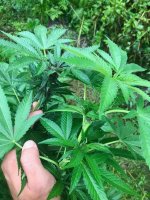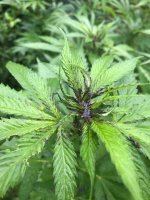bacteria or fungal infection….it's in the soil, rampant in my area for 5-8 years now.
i agree with meadow man ^^^ it's an infection of some sort ... i see this on my outdoor plants sometimes and treat them accordingly ... does this look familiar ? it's an example of a fungal infection turning a normally green hydrangea leaf purple ... it looks similar to what you have .. >>>






